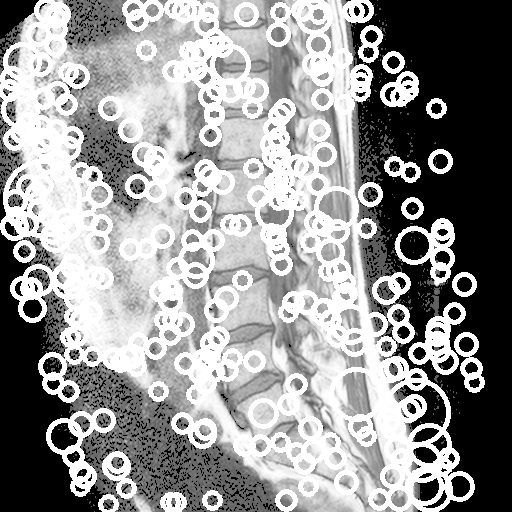CascadeClassifier.detectMultiScale takes a minute! Why?
I am trying to create a vertebra detector. After manually creating a small set of training and background images, trained a classifier, and am now trying to use it. Results are nonsense, but that I expected. The problem I am having is very long running time ~ 1 minute for one image, instead of some ~ 100ms, for release build.
What am I doing wrong?

detection time = 65799.5 ms

#include "opencv2/objdetect/objdetect.hpp"
#include "opencv2/imgproc/imgproc.hpp"
#include <opencv2/highgui/highgui.hpp>
using namespace cv;
int main(int argc, char* argv[])
{
CascadeClassifier cascade;
cascade.load("cascade.xml");
cv::Mat img = cv::imread("D:/img.png",0);
int i = 0;
double t = 0;
double xres=0.625, yres=0.625;
vector<Rect> faces;
equalizeHist(img, img);
t = (double)cvGetTickCount();
cascade.detectMultiScale( img, faces, 1.1, 2, 0,
Size(10/xres, 10/yres), Size(55/xres, 55/yres) ); //min 10mm, max 55mm
t = (double)cvGetTickCount() - t;
printf( "detection time = %g ms\n", t/((double)cvGetTickFrequency()*1000.) );
for( vector<Rect>::const_iterator r = faces.begin(); r != faces.end(); r++, i++ )
{
Point center;
Scalar color = CV_RGB(255,255,255);
int radius;
center.x = cvRound((r->x + r->width*0.5));
center.y = cvRound((r->y + r->height*0.5));
radius = cvRound((r->width + r->height)*0.25);
circle( img, center, radius, color, 3, 8, 0 );
}
cv::imshow( "result", img );
cv::waitKey(0);
return 0;
}


It is possible that a too high res could slow the detector. Your image is in which resolution? Also try to increase the number of neighbors. Anyway, the cascade training maybe a bit unpredictable, it does not guarantees a good detector in all the situations.
Image resolution is 512x512. Increasing the number of neighbors to 4 changes nearly nothing. Number of detections is about the same, and execution time is the same.